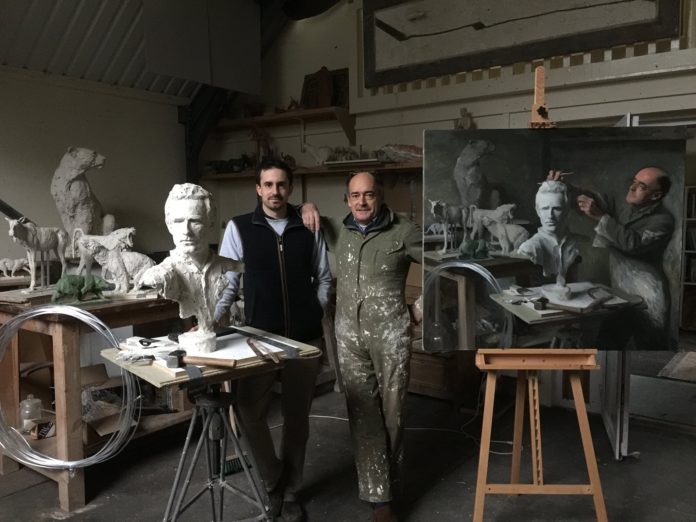BY JAMIE CORETH
I would like to begin this article with a project my father, Mark Coreth, and I undertook together. Dad made a portrait bust of me and I made a painting of him sculpting me. Good father-son stuff. It is perhaps a slightly sentimental image but then again, it’s also a fairly unusual thing to have a sculptor raise a painter.
I’ve pretty well always avoided sculpture. This is not the result of a conscious decision on my part, but my inclination has always been towards conceiving of things in two dimensions rather than three. Who knows, maybe the notion of doing the same thing as my old man turned me off to the idea.
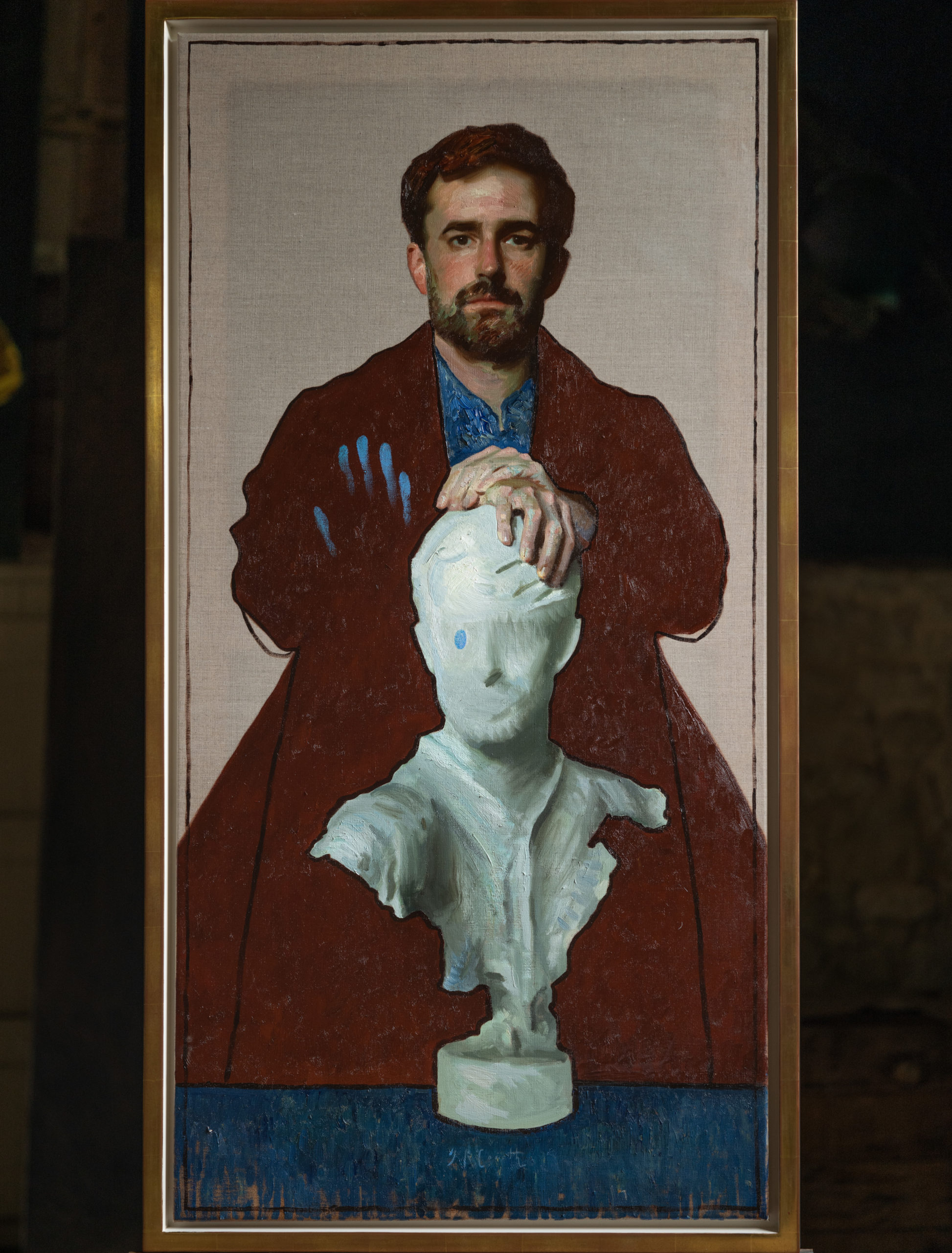
However, being raised by an animal sculptor has taught me certain valuable lessons about the discipline of creating art. The lessons I have taken from sculptor dad are not exactly technical ones. I’ve spent years watching him in action and understand well how he makes his work, but the most valuable things I have absorbed from him relate to his way of thinking about his art.
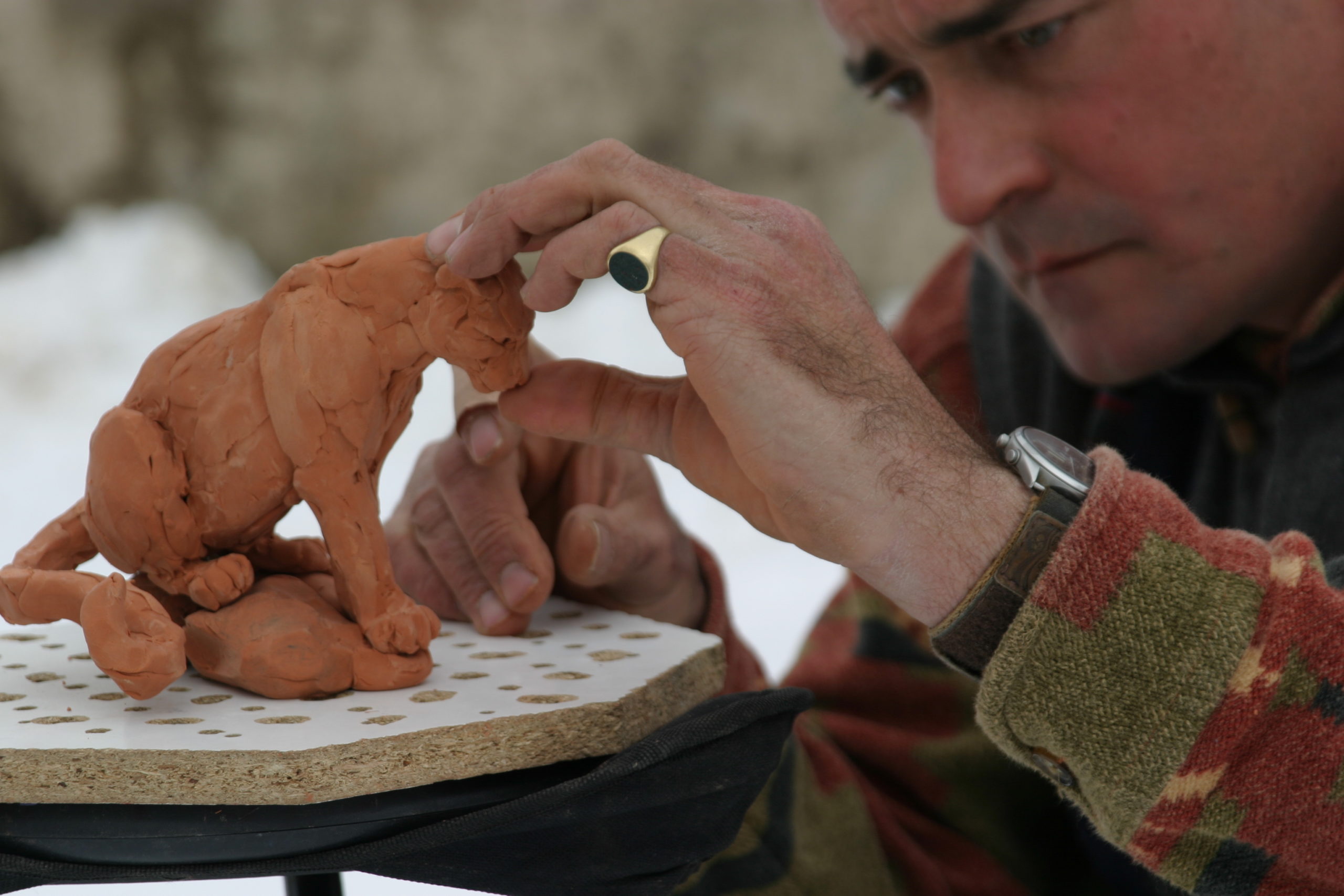
For Mark, the vast majority of the work in any of his sculptures is done long before he even contemplates creating the armature. The work begins with an in-depth study of his subject matter. An eccentric man, he says he likes to “become his animal.” By this, he means he likes to develop a fully felt understanding of his subject. It’s about experiencing an animal in its natural habitat—how it moves through an environment and reacts to things around it. It’s about gaining enough of an understanding of something that the work conveys a sense of being there, and reproduces something of the feeling one gets watching an animal in the wild.
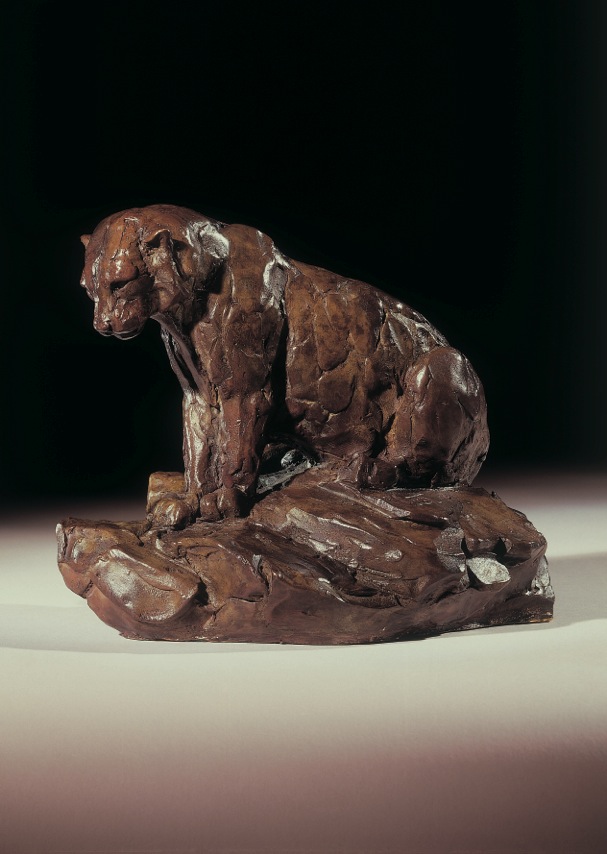
He goes to extreme parts of the world in order to achieve this. For example, in 2004 he went with a small team to the Himalayas in search of one of the most elusive creatures on earth: the snow leopard. With a titanic spot of luck, he actually saw one and sculpted it there, at 14,000 feet. That maquette served as a sketch for numerous sculptures of snow leopards upon getting back to his studio in the UK. In this respect, whilst the technical side of pulling off a sculpture is clearly important, it’s the ideas born of real experience that make the thing resonate with some sort of honesty and authenticity.
Sculpting, Inspiring Portrait Painting
As a portrait painter, I believe there is much to take from this. Disappointingly, most people’s natural habitats are rarely in extreme places, but painting them from life at the very least offers opportunities to direct something real into the work.
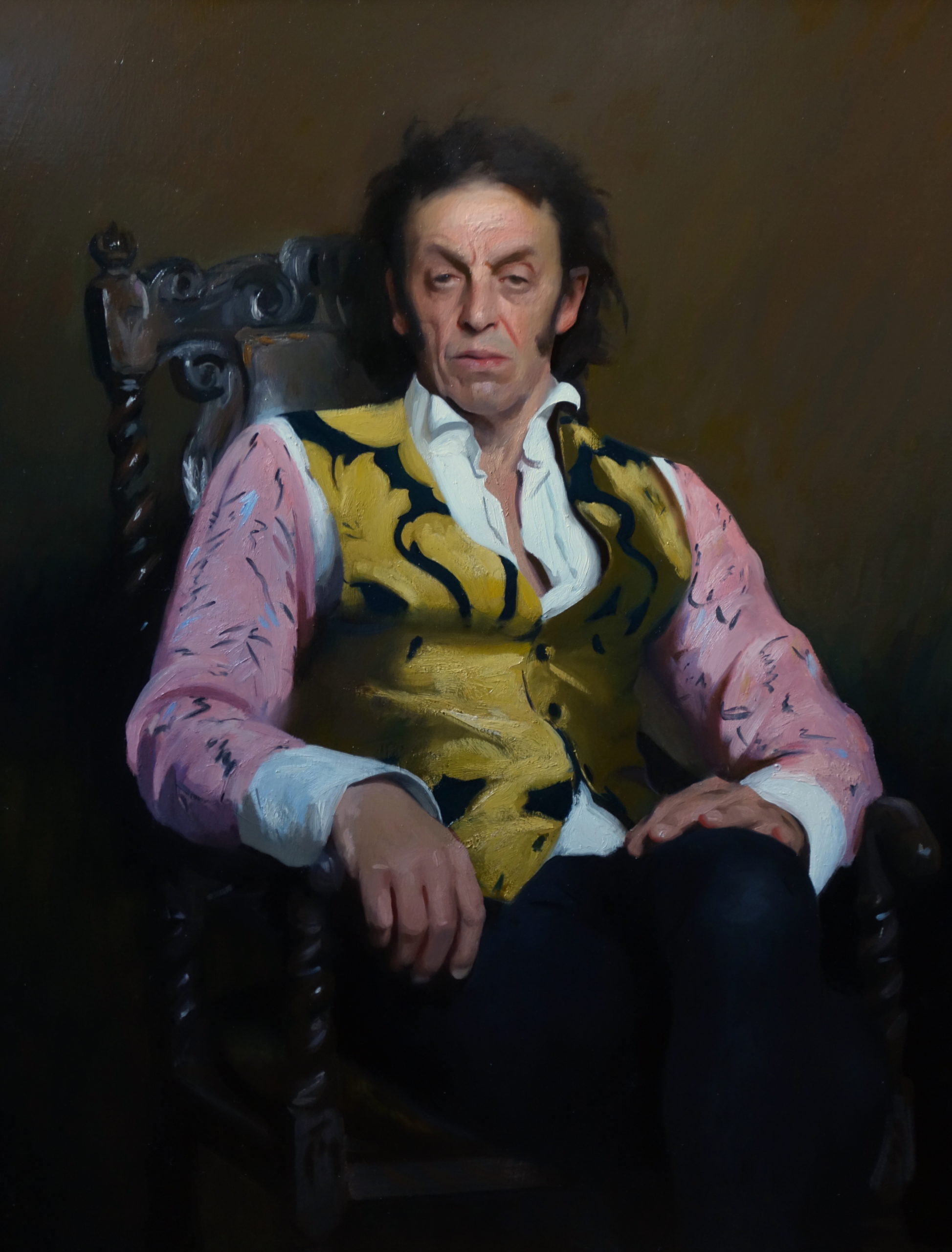
When I look at paintings by Velasquez, Rembrandt, or Sargent (to name just three), it feels like there is actually someone there. This, I believe, is the result of subtleties that can only be observed when working from nature. There is a consciousness in their paintings of the experience of sight: how objects in our peripheral vision become secondary to our focus; how colors dance around highlights when light skims across our eyes; and how different materials and surfaces “feel” to look at.
The artistic interpretations of these things are, of course, individual. The relationship between colors is something that seems to be quite a personal thing, and different people translate colors in different ways. The aesthetic properties of the paint as well in their work seem to follow some kind of dialogue with the sensations of looking at nature: sharp contours feel sharp, shadowy areas swim out of focus, flesh stretched over bone looks pale and can be expressed by stretched impasto . . . I could go on. As I think of it, when looking at contemporary realist paintings, I am rarely struck by this sensation of somebody really being there behind the canvas. Occasionally I see it, and it’s always striking, but as I say, it’s rare.
In my experience with painting portraits, there’s another element that working directly from one’s subject brings. There are very few situations where two people stare at each other for hours on end. Invariably this helps to break down any problems involved in getting to know one another, and I always find that my sitters become a major part of my life for the time we work on a project together.
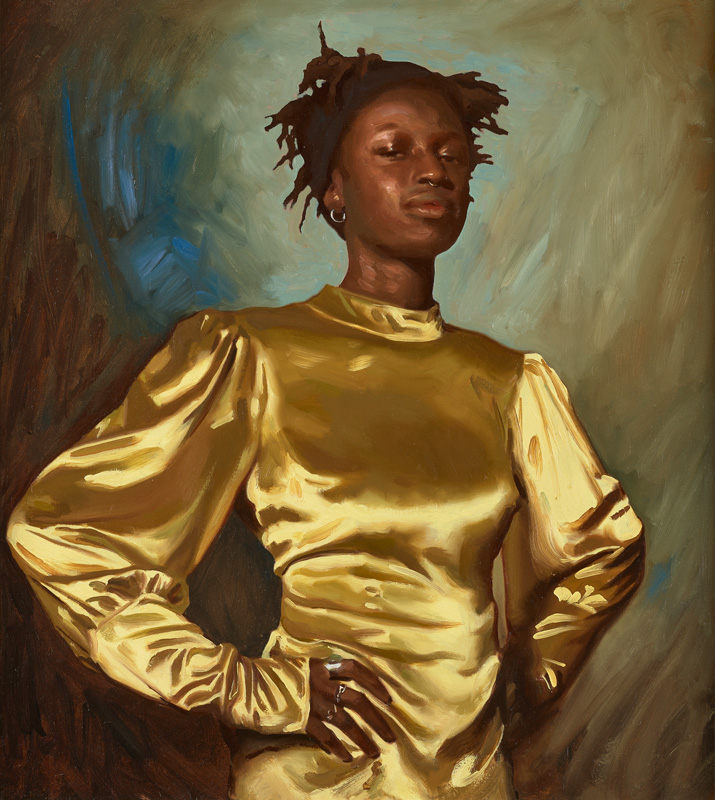
I’ve often wondered why people sometimes don’t look like themselves in photographs. I think it’s to do with your experience of them. You know what it feels like to engage them in conversation; what accents their mannerisms have; how they walk and hold themselves; how they listen; and how they look when they’re in thought. Many expressions and quirks of how they look are presented to you over time. I try to keep a process of working that is open to change, so that when I see something fleeting and beautiful, I am able to attempt to go after it without worrying about breaking the impression of my painting. I indulge in a near-masochistic level of contentedness for totally repainting a head if I feel something better can come out of it.
Technique has dominated my thoughts since having started on the path to becoming a painter. Drawing, values, color, edge treatment, design, material concerns: what pigments are most effective and reliable? What do different mediums do? How best to get my work to conserve?
These questions still preside over me and frankly they probably always will, but as I grow more confident with my technique I find other influences have started to creep in, influences that resonate with Dad’s approach to his sculpture. Knowing one’s subject and developing sensitivity to your feelings about the impression of a scene enable the process of a painting to gain direction.
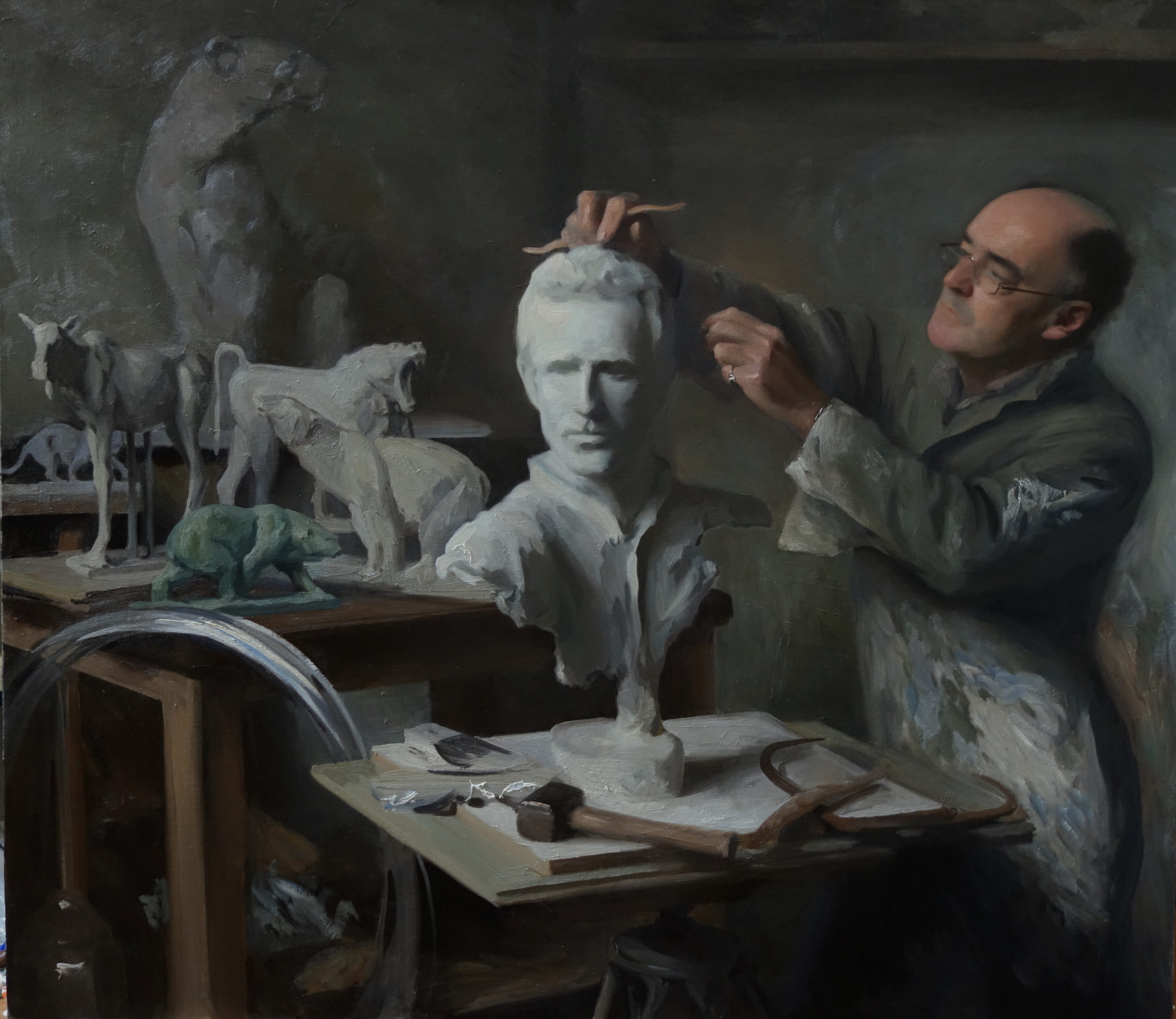
Connect with Jamie Coreth:
Website | Instagram
Become a Realism Today Ambassador for the chance to see your work featured in our newsletter, on our social media, and on this site.


